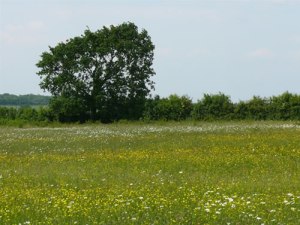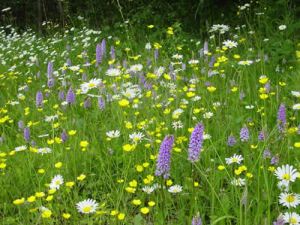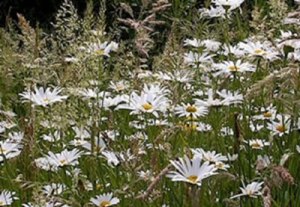Over the past few years we have seen a change in the way our customers lay out and tend their gardens.
Gone are the days of pristine borders, immaculately pruned with the symmetrical, square edges you could play a game of snooker on. No, there has been a border revolution in recent times. A revolution that has seen an end to the manicured edges that mirrored the expansive hedge gardens of Britain’s stately homes.
Instead there has been a slow but steady movement towards the natural, unclipped borders of beautiful meadow flowers, busy with bees and insects which entice local birds and fill your little patch of heaven with the wonderful sounds of nature at work.
And my-oh-my, are we pleased! Not only are wild or meadow flowers a delight to the senses, particularly with their vibrant variations of colour, but they play a hugely important role in nature. It’s a role that simply cannot be recreated with the manicured mini-hedges that had seemingly become the norm in our gorgeous gardening world.
Long may this revolution continue because it’s with a heavy heart that we share the statistic that 97 per cent of our meadows have disappeared over the past 60 years. That’s an incredible number and we are only just starting to understand its effect, particularly when it comes to the loss of some of our wildlife.
Which brings us neatly onto bees, the beautiful buzzing creatures made famous by their honey, a cherished commodity for thousands of years, and yet despite this need for the sweet succulent stuff, there numbers have been depleting rapidly for decades.
We’re not saying that bees have been disappearing at the same rate as our meadows, nor that this is the reason, but we can say this – if you want to see more bees in your garden, then plant more bee-friendly flowers.
It’s a good time of year to sow the seeds that will reap masses of wild flowers come spring but it’s not just flowers that will brighten your backyard. There should be a myriad of butterflies fluttering around your borders alongside the bees and other insects, and who doesn’t love butterflies?
It’s true there are some flowers preferred by bees and butterflies which are sometimes hard to find on the seed shelves of your local garden centre, but do not despair. Our packets of bee-friendly seeds are just the thing for our buzzing friends to enjoy all summer long. They’re also fortified with Mycorrhiza to ensure their roots grow strong and healthy to produce the best possible harvest of beautiful bee and butterfly-friendly flowers for your borders.
So go on, give them a go and enjoy the wonderful sounds of nature buzzing around your garden next spring. Sowing seeds couldn’t be simpler for the weathered gardener but for those that are new to this, we can help.
Although normally done in September, there’s still time to sow now so prepare the soil by clearing all existing plants and grass, paying particular attention to perennial weeds such as stinging nettles, docks and couch grass. Then dig the soil over, firming it well before raking to create a level bed. This is where you need to ignore the urge to fork in fertilisers or manure because this will encourage plants that will crowd out the wild flowers.
Now, when it comes to sowing, one gram of wild flower seeds is enough for one square metre of soil. All you have to do is spread the seed, rake over to cover and then place some protection over the area to keep away the birds and cats. Then, as the winter months turn to warmer weather, make sure you keep the ground moist. Once the seeds start growing, you may want to add a bit of our organic liquid biohumus fertiliser to give them a little helping hand.
We promise that next summer you’ll be absorbing the sights and sounds that wild flowers bring. Not only will that be a wonderful addition to your garden but you’ll be helping nature as well, and that’s every gardener’s dream.
Enjoy.




